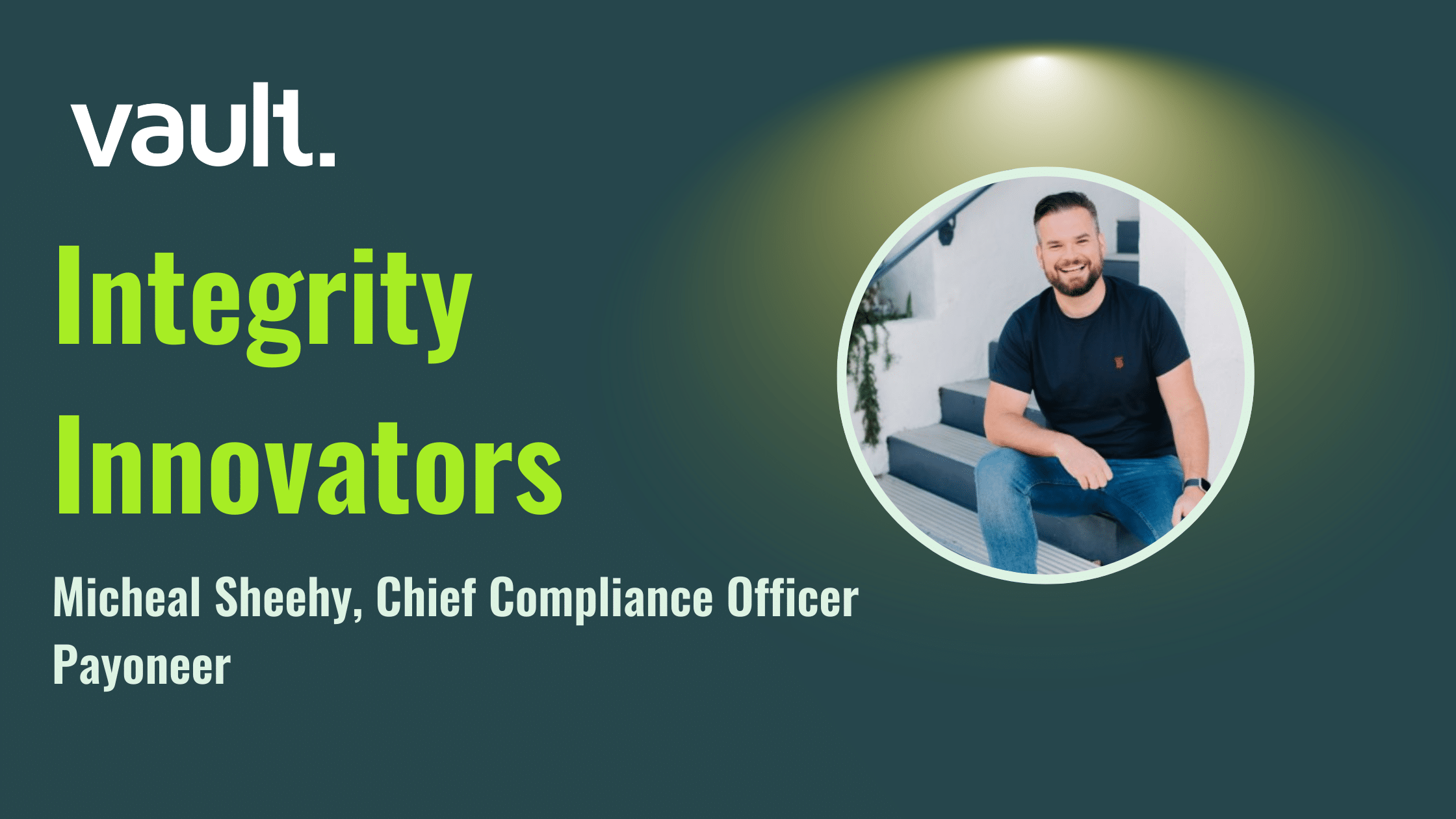
E&C professionals like Chief Compliance Officers (CCO) are well-versed in risk analysis, policy development, due diligence, and introducing programs based on the company’s values. Their aim to drive ethical conduct and reduce the risk of regulatory violations or unethical behavior – coupled with the individual’s unique subject-matter expertise, skillset, and character – means that CCOs are well-positioned to help the Board fulfill their responsibilities.
Here’s how E&C professionals can successfully pitch ideas to the Board, Speak Up about an organization’s impact, and be heard.
Recognize The Responsibilities of the Board
Corporate boards wield great power; approving corporate strategy, hiring the CEO, and determining compensation for its senior executives to ensure pay and performance align with stakeholder expectations. With that power comes a long list of responsibilities.
The Board is responsible for ensuring that employees, company processes, and initiatives follow applicable rules and regulations in the pursuit of its business objectives, and more generally, for oversight of the outputs of the compliance function. This is ever more challenging as the realm of compliance grows and the regulatory environment becomes more complex.
In a keynote address at the Society for Corporate Governance National Conference, SEC Commissioner, Allison Herren Lee, drew the connection between the growing influence of corporations over the social and economic well-being of people and communities and the rising tide of Board responsibilities in climate change, racial justice, and economic inequality.
The Board has significant oversight responsibilities, with an ever-growing emphasis on ESG strategy and ESG-related risks. These obligations flow from both federal securities laws and fiduciary duties rooted in state law. In 2020, The World Economic Forum published a white paper explaining that boards need to integrate ESG into corporate governance out of a recognition that business value creation is increasingly dependent on understanding and managing these risks and opportunities.
With Responsibility Comes Risk
Directors should understand the businesses they serve and provide real oversight of their unique risks. When they fail to do so, the consequences can be catastrophic. For example, in the case of Boeing, after two fatal crashes in 2018 of their 737 MAX, a suit was filed against current and former Board members and Executive Officers alleging that they failed to monitor safety risks to such an extent that it was no longer a topic of discussion in board meetings, despite numerous safety-related red flags.
The plaintiffs in the Boeing case argued that the disaster was linked to a broader lack of attention to safety by Board members, who reportedly “breached their fiduciary duties to the company by dismantling Boeing’s lauded safety-engineering corporate culture in favor of what became a financial-engineering corporate culture.” As a result, Boeing’s directors were charged with liability for losses incurred by the company and its shareholders resulting from not having exercised proper oversight over the company’s activities. They agreed to pay $237.5 million (minus attorneys’ fees and expenses) directly to the company.
Help to Establish ‘Tone at the Top’ Governance
When it comes to reporting, companies should consider both their financial performance and how they make a positive contribution to society. To establish Tone at the Top, the Board must role model company values and promote a culture of compliance in everything it does. The Board should set the tone through the diversity of its members, the executive it appoints to lead the company, the decisions it makes on where to focus its attention, and the engagement it expects within the communities in which the business operates.
Diversity at all levels of the company – including at the Board level – must also be top of mind. When the Board prioritizes diversity, it sends the message to its stakeholders that having differences, celebrating those differences, and speaking up for those differences is safe and supported by the company.
To promote and support good governance, the Board must have a solid understanding of the key risks to its business, proactively seek to integrate them into its decision-making and provide appropriate levels of oversight of these risks. This is where the CCO plays a huge part. Particularly in the ESG space, good governance helps to mitigate the risks and better position a business’s model to stand out as an ESG leader in their industry and better compete for capital.
To establish Tone at the Top and promote and support good governance, the Board must have confidence in the CCO and team to implement an effective compliance program with continuous improvement and forward-looking solutions. This requires a sufficient budget to hire and retain skilled in-house professionals, to adopt new solutions that provide its programs with modern analytical capabilities, and to seek external subject-matter expertise, when warranted.
Build a Concrete Relationship with the Board
A recent BDO Pulse Survey reinforces the message that Board members and CCOs need to work hand-in-hand to meet the moment and move into the future. This requires the CCO to cultivate a solid working relationship and partnership with Board members from a place of familiarity and trust.
The CCO helps the Board and senior executives set the Tone at the Top by driving company values and a culture of compliance throughout all levels of the organization. The CCO is uniquely qualified to train the Board on compliance and ethics topics (including mandatory Code of Conduct training); by equipping them with the language of culture and compliance; and by including board members as active participants in compliance initiatives including live training and compliance communications.
The CCO is instrumental in helping to create a strong governance foundation by ensuring that the company has the right resources; policies, processes and procedures; and training and controls to meet evolving regulatory and legislative obligations, confront its greatest risks and make informed decisions to protect the business and its stakeholders. They can also help senior management adhere to best practices in disclosures as new and challenging guidance develops.
One of the most important ways the CCO builds a trusted relationship with the Board is through effective, transparent, and impactful communications. The CCO must “meet them where they are” so that communications not only impart subject matter expertise and information that the Board needs to fulfill its responsibilities but is also delivered with the right frequency, tone, and tenor. As an example, CCOs should now be communicating with the Board on the urgency of looming regulatory requirements for ESG disclosure that requires the Board’s oversight and direction.
Join Forces With Gatekeepers
The CCO collaborates frequently with other gatekeeping functions and can provide valuable information to the Board on their collective efforts to increase transparency and enhance the company’s overall control environment. Likewise, the CCO can provide the Board with important insight into company culture by reporting on results of root cause analyses of employee misconduct, highlighting trends, and demonstrating consistent action taken to mitigate the risks.
Build the Right Team
By building a forward-looking and adequately technology-savvy team, the CCO is well-positioned to talk to the Board about new and creative solutions, including technology solutions in the realm of whistleblowing and risk management, to some of the biggest challenges facing companies today, including the environment, corporate culture, and workplace conduct.
Ready to revolutionize misconduct reporting and resolution for your employees? Book a demo today.




